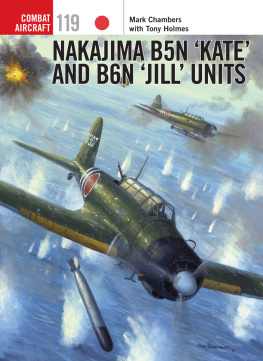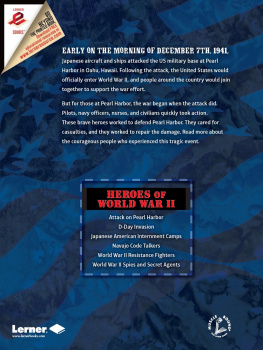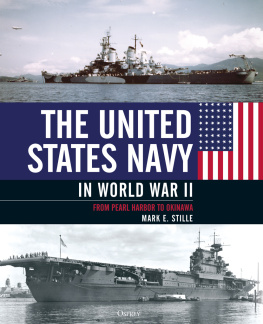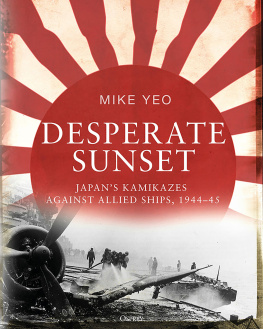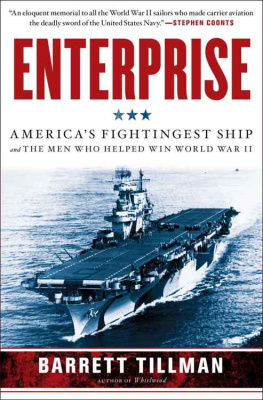
First published in Great Britain in 2017 by Osprey Publishing
PO Box 883, Oxford, OX1 9PL, UK
1385 Broadway, 5th Floor, New York, NY 10018, USA
E-mail:
This electronic edition published in 2017 by Bloomsbury Publishing Plc
OSPREY is a trademark of Osprey Publishing, a division of Bloomsbury Publishing Plc.
Osprey Publishing, part of Bloomsbury Publishing Plc
2017 Osprey Publishing
All rights reserved
You may not copy, distribute, transmit, reproduce or otherwise make available this publication (or any part of it) in any form, or by any means (including without limitation electronic, digital, optical, mechanical, photocopying, printing, recording or otherwise), without the prior written permission of the publisher. Any person who does any unauthorised act in relation to this publication may be liable to criminal prosecution and civil claims for damages.
A CIP catalogue record for this book is available from the British Library
ISBN: 978-1-4728-1874-4 (PB)
ISBN: 978-1-4728-1876-8 (eBook)
ISBN: 978-1-4728-1875-1 (ePDF)
Edited by Tony Holmes and Philip Jarrett
Cover Artwork by Mark Postlethwaite
Aircraft Profiles by Jim Laurier
Osprey Publishing supports the Woodland Trust, the UKs leading woodland conservation charity. Between 2014 and 2018 our donations will be spent on their Centenary Woods project in the UK.
To find out more about our authors and books visit www.ospreypublishing.com. Here you will find our full range of publications, as well as exclusive online content, details of forthcoming events and the option to sign up for our newsletters. You can also sign up for Osprey membership, which entitles you to a discount on purchases made through the Osprey site and access to our extensive online image archive.
CONTENTS
INTRODUCTION
During the Sino-Japanese War of the late 1930s the Imperial Japanese Naval Air Force (IJNAF) introduced into service a revolutionary new torpedo/attack aeroplane, the Nakajima B5N1. It was eventually given the codename Kate by the Allies, who gave all Japanese bombers female names and all Japanese fighters male names. Although the aircraft excelled in the combat arena, Japanese naval planners eventually became aware of several shortcomings in its design particularly the inadequate armour protection for the crew and the lack of self-sealing fuel tanks. It duly authorised Nakajima to pursue the design and development of a more advanced replacement.
The IJNAF instructed Nakajima to replace the aeroplanes original Nakajima Hikari 3 radial engine, rated at 770 hp, with a more advanced Nakajima NK 1B Sakae 11 unit that produced 1000 hp. It was now hoped that the torpedo/attack aircraft would be fast enough to outpace Allied fighters. The new version of the Kate, designated B5N2, achieved surprising and dramatic successes in the IJNAFs attack on the US naval base at Pearl Harbor on 7 December 1941, and subsequently contributed to the sinking of the aircraft carriers USS Lexington (CV-2) at the Battle of the Coral Sea in May 1942, USS Yorktown (CV-5) at the Battle of Midway the following month and USS Hornet (CV-8) at the Battle of the Santa Cruz Islands in late October 1942.
Later- war-period versions of the Kate were equipped with air-to-surface vessel radar and performed antisubmarine warfare (ASW) duty, while others continued to serve as bombers and trainers. Ultimately, the IJNAFs remaining Kates were expended in the kamikaze role in a last-ditch measure to defend Japans dwindling territorial possessions from Allied conquest.
The Kates replacement, the Nakajima B6N Tenzan (Heavenly Mountain), codenamed Jill by the Allies, was a marked improvement over its predecessor. However, by the time it was deployed in combat in late 1943, the US Navy was already fielding the Grumman F6F Hellcat in large numbers aboard its carriers, and the fighter soon gained aerial supremacy in Pacific skies. The Jill was never really able to achieve its full potential in combat and, like most other IJNAF aeroplanes, was relegated to the kamikaze role during 1945.
This book covers the history of the Kate and Jill torpedo/attack bombers, including their design and development, as well as the aeroplanes action-packed combat record.
ACKNOWLEDGEMENTS
Numerous individuals deserve great thanks for providing crucial support during the writing of this book. First and foremost, Mark Chambers would like to thank his loving family, his wife Lesa, daughter Caitlyn and sons Patrick and Ryan, for tolerating his ceaseless words of enthusiasm and providing encouragement and support for this project. Thanks also go to David Pfeiffer (Civil Records Archivist), Nate Patch (Military Records Archivist) and the staff of the Textual Reference Branch of the US National Archives and Records Administration (NARA) at College Park, Maryland. Thank you also to Holly Reed and the staff of the Still Pictures Branch of the US NARA at College Park, Maryland. In addition, thanks to Archie DiFante and Tammy T Horton of the Air Force Historical Research Agency (AFHRA) at Maxwell AFB, Alabama, for providing additional research assistance and materials. Thanks also go to Mark Eite (AFLO, The Manichi Archives, Tokyo, Japan) for providing rare, authentic Japanese-sourced aircraft photographs. Tony Holmes would like to express his profound thanks to Osamu Tagaya (Osprey Combat Aircraft 63 Aichi 99 Kanbaku Val Units), Mark Stille (Osprey Duel 76 US Navy Ships vs Kamikazes 194445 and Osprey Campaign 247 Santa Cruz 1942), Edward M Young (Osprey Aircraft of the Aces 109 American Aces against the Kamikaze) and Dr Tom Lewis and Peter Ingman (Carrier Attack Darwin 1942) for allowing material text and photographs from their various books to be used in this volume. Finally, thank you again to Osamu Tagaya for taking the time to provide new information for inclusion in this volume and to fact check the edited manuscript.
CHAPTER ONE
B5N KATE DEVELOPMENT AND EARLY SUCCESSES
In 1934 the Naval Air Arsenal at Yokosuka devised the IJNAFs last biplane bomber in response to the Services 9Shi requirement, which called for the development of a more advanced carrier attack aircraft. Known as the Yokosuka B4Y1 (Navy Type 96 Carrier Attack Aircraft), it was codenamed Jean by the Allies following Japans entry into World War 2. The aircrafts designer was Sanae Kawasaki of the First Naval Air Technical Arsenal, located at Yokosuka, and it was intended to offer a performance capability matching that of the Mitsubishi A5M Claude monoplane fighter. The Jean had a fixed undercarriage and an all-metal airframe, and was the first IJNAF carrier strike aircraft to have an air-cooled radial engine. It was operated by a crew of three, with the pilot seated in the front cockpit, a navigator in the middle and a radio operator/gunner in the rear cockpit. The Jean prototype made its maiden flight in late 1935.

The Yokosuka B4Y1 (Navy Type 96 Carrier Attack Aircraft), codenamed Jean by the Allies, was the IJNAFs last biplane attack aircraft and precursor to the more advanced, and famous, Nakajima B5N Kate monoplane attack aircraft. Marked with a K code on its tail, denoting its assignment to the carrier

